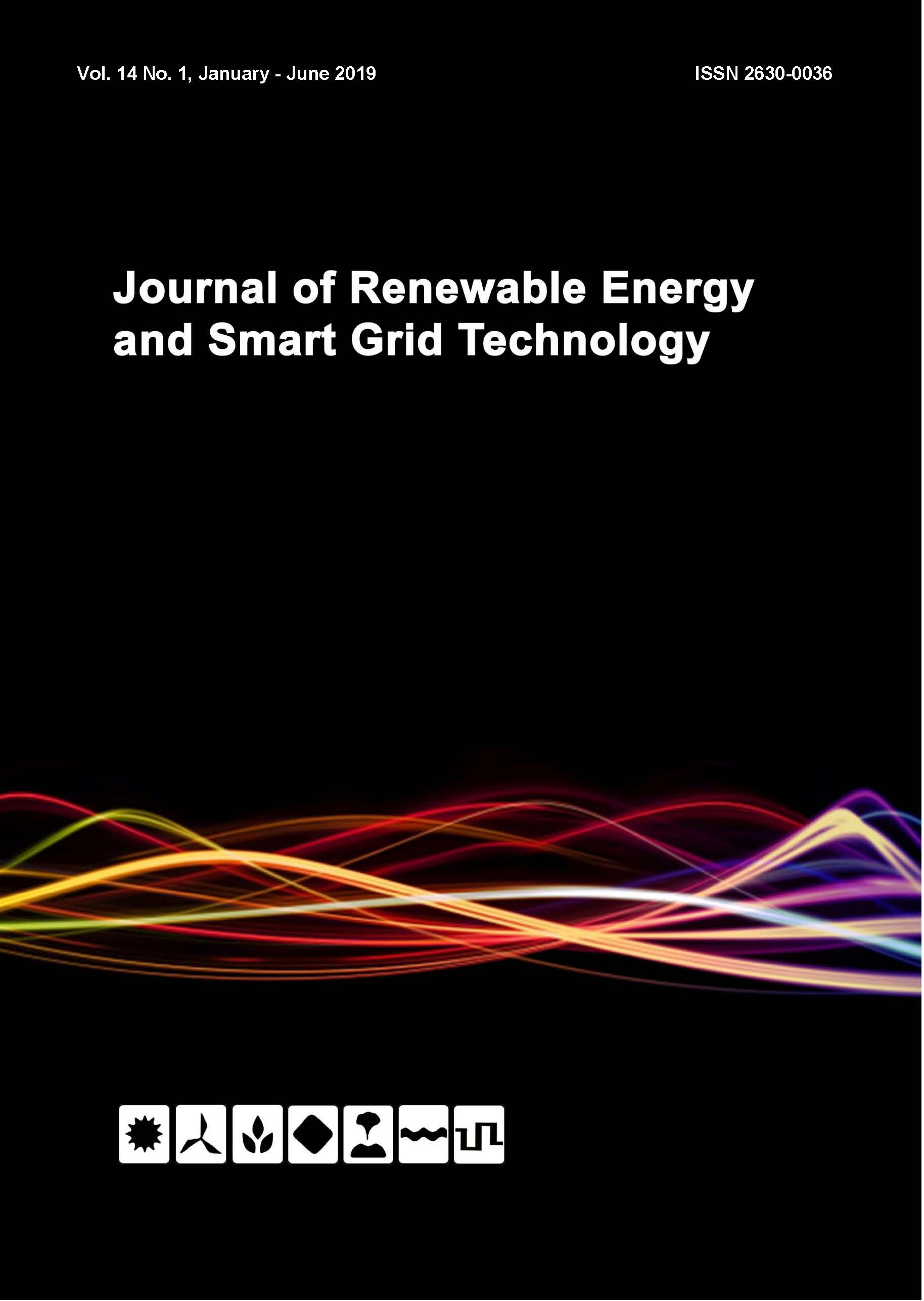A Novel Analysis of Standalone PV Mini-Grid Model for Climate Change Mitigation in Myanmar’s Rural Village
Keywords:
Myanmar, HOMER Pro, Off-grid, 100% Renewable Fraction PV Mini-grid model, DS, Climate Change MitigationAbstract
PV Mini-grid is becoming the feasible solution for fueling socio-economic development, of off-grid villages in Myanmar. This research work involved techno-economic analysis of five PV mini-grid models. The models were varied by having five demand scenarios (DS) as the sensitivity values. The experience of a village in Ma Gyi Pin Te is shared. The village is located in Taungtha Township, Mandalay region, in central Myanmar where there is high Solar PV potential. The village has 270 households with a population of 1,124. The electricity demand is projected to consist of primary load 1 (96.92 kWh/day, 30.94 kW peak), primary load 2 (588.10 kWh/day, 102.69 kW peak), and the deferrable load (117.53 kWh/day, 44.67 kW peak). After thousands of simulation exercises on off-grid PV mini-grid models using HOMER Pro (version 3.12.0), the optimum model was selected. This proposed model consists of PV modules of capacity of 208 kW, PV-MPPT of 150 kW, Storage Battery (Lead Acid) capacity of 800 kWh, and the Converter of 80.7 kW. Its LCOE (Levelized Cost of Energy) is 0.267 $/kWh. According to the simulation results, Diesel fuel 142,978 L/yr, and its cost 94,366 $/yr will be saved. Also, about the equivalent of CO2 374,263 kg/yr emission will be avoided. This research work can be used for optimization studies to plan and deploy more PV mini-grids in Myanmar to achieve technical and economic efficient rural electrification in off-grid areas that also help in climate mitigation.
References
[2] Aung, AZ Ya. (2018). An innovative zero-emission energy model for a coastal village in southern Myanmar, Global journal of researches in engineering (F), Electrical and Electronics Engineering, Massachusetts, USA, 18., 2, Version 1, 23-35.
[3] Aung, AZ Ya. (2018). Green improving by autonomous PV mini-grid model in central Myanmar, Global journal of researches in engineering (F), Electrical and Electronics Engineering, Massachusetts, USA, 18, 1, (1), 49-64.
[4] Aung, AZ Ya. (2016). French green growth paradigm in-line with EU targets towards sustainable development goals, European journal of spatial development, Rome, Italy, 5, (2), 143-169.
[5] The World Bank. (2015). Myanmar, National electrification project, World Bank Group, Washington D.C.
[6] Department of Rural Development. (2018). List of the rural electrification villages with the stage/region by the end of 2016-2017 fiscal year, National electrification project, Ministry of Agriculture, Livestock and Irrigation, Nay Pyi Taw, Myanmar.
[7] Electrical Engineer Office. (2012). Township electrification report, Ministry of Electric Power, Taungtha Township, Myanmar.
[8] Electrical Engineer Office. (2014). Township electrification report, Ministry of Electric Power, Taungtha Township, Myanmar.
[9] Specific carbon dioxide emissions of various fuels. Retrieved from https://www.volker-quaschning.de/datserv/CO2-spez/index_e.php
[10] Is burning wood really a long term energy descent strategy? Retrieved from https://www.transitionculture.org/2008/05/19/is-burning-wood-really-a-long-term-energy-descent-strategy/
[11] How much Co2 is stored in 1 kg of wood. Retrieved from https://www.kaltimber.com/ blog/2017/6/19/how-much-co2-is-stored-in-1-kg-of-wood
[12] WHO and The World Bank. (2014). Access to modern energy services for health facilities in resource-constrained settings, Geneva, Switzerland, WHO.
[13] Trading economics. Retrieved from https://tradingeconomics.com/myanmar/rural-population-percent-of- total-population-wb-data.html(accessed on 3. 3. 2018).
[14] IRENA. (2017). REthinking Energy2017, Accelerating the global energy transformation, Abu Dhabi.
[15] ADB. (2017). Guide Book: Developing Renewable Energy Mini-Grids in Myanmar,ADB Mandaluyong City, Metro Manila, Philippines.
[16] SOLARGIS. Retrieved from https://solargis.com/products/maps-and-gis-data/download/ Myanmar (accessed on 3. 2. 2018).
[17] The Central Bank of Myanmar. Retrieved from https://www.cbm.gov.mm/ (accessed on 10. 8. 2018).
Downloads
Published
How to Cite
Issue
Section
License
All copyrights of the above manuscript, including rights to publish in any media, are transferred to the SGtech.
The authors retain the following rights;
1. All proprietary rights other than copyright.
2. Re-use of all or part of the above manuscript in their work.
3. Reproduction of the above manuscript for author’s personal use or for company/institution use provided that
(a) prior permission of SGtech is obtained,
(b) the source and SGtech copyright notice are indicated, and
(c) the copies are not offered for sale.








